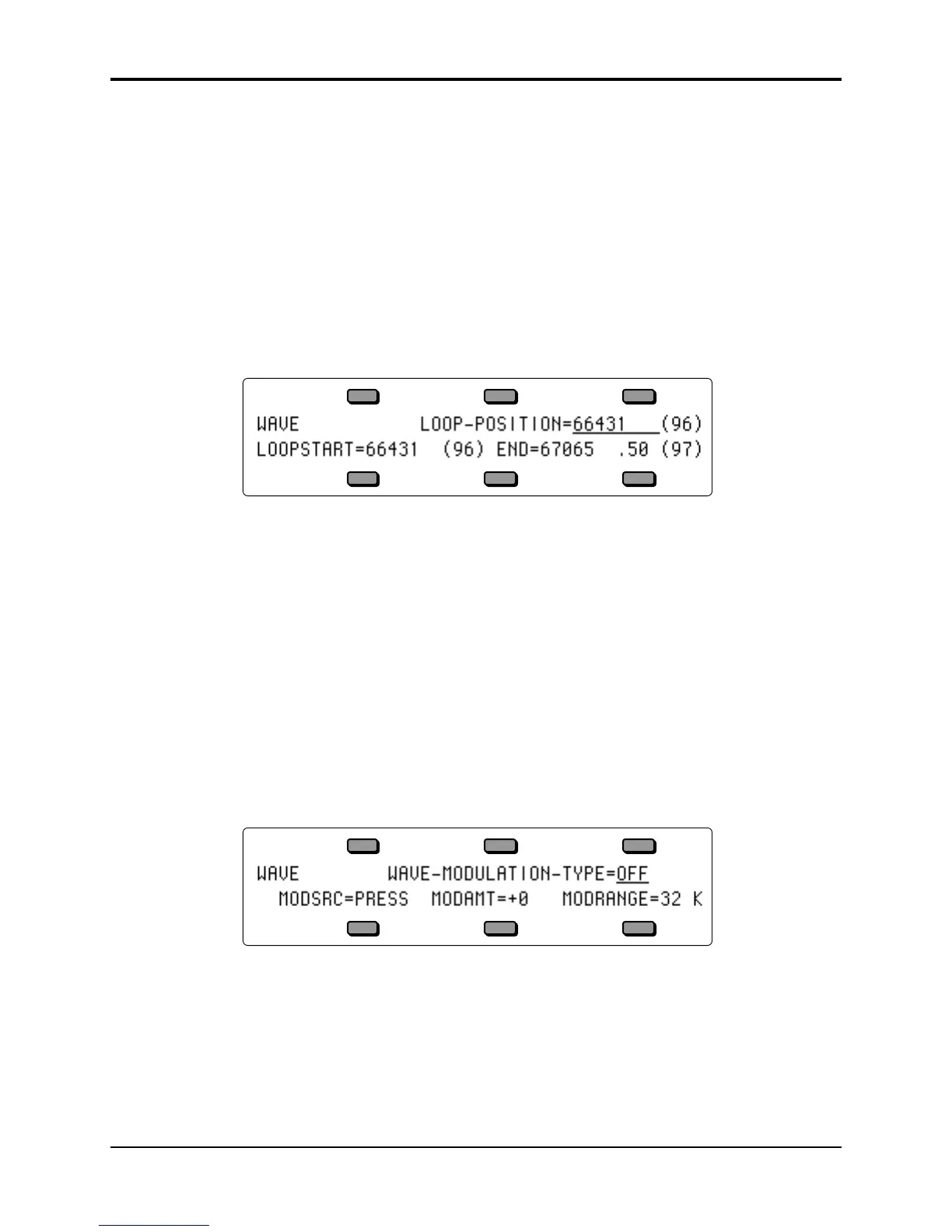Section 15 — Sampled Sound Parameters TS-10 Musician’s Manual
18
Start in steps of one percent of the entire WaveSample. Use the Data Entry Slider or the Up/Down
Arrow buttons to move the Sample Start ahead until the dead space is gone when you play.
Once you have gotten close using the percent setting, press the Left Arrow button to underline
the Fine Adjust setting. Now the Data Entry Slider or the Up/Down Arrow buttons will move
the SAMPLE-START in small steps (less than 1%), letting you fine-tune its exact position while
playing the WaveSample.
Sample END
Allows you to set the sample end point. Again you see the sample number (Fine Adjust) and the
percent (Coarse Adjust). Use the data entry controls to edit this parameter in the same fashion as
the SAMPLE-START parameter.
Press the Wave button again. The second WAVE sub-page is displayed.
LOOP-POSITION
This parameter displays the LOOP-START but moves both LOOP-START and END, keeping the
size of the loop the same. It lets you search for the perfect loop location after you’ve set up an
optimal loop length.
LOOPSTART
This parameter allows you to set the loop start point. After making a sample it is often necessary
to “loop” (play over and over) a portion of the sound, so that it can sustain indefinitely when the
key is held down.
Loop END
This parameter allows you to set or change the loop end point.
Note: The maximum loop length is 1.5 MegaWords.
Press the Wave button a third time. The final WAVE sub-page is displayed.
WAVE-MODULATION-TYPE Range: various (see below)
This parameter allows you to modulate certain WAVE page parameters with any of the 15
modulation sources. The WAVE-MODULATION-TYPE parameter specifies which of the WAVE
page parameters the modulation will affect. There are seven possible modulation types:
• OFF — Wave modulation is disabled.
• LOOP POS — Selecting this setting will modulate the LOOP-POSITION of the WaveSample,
moving it forward (towards the end of the WaveSample) with positive MODAMT values, and

